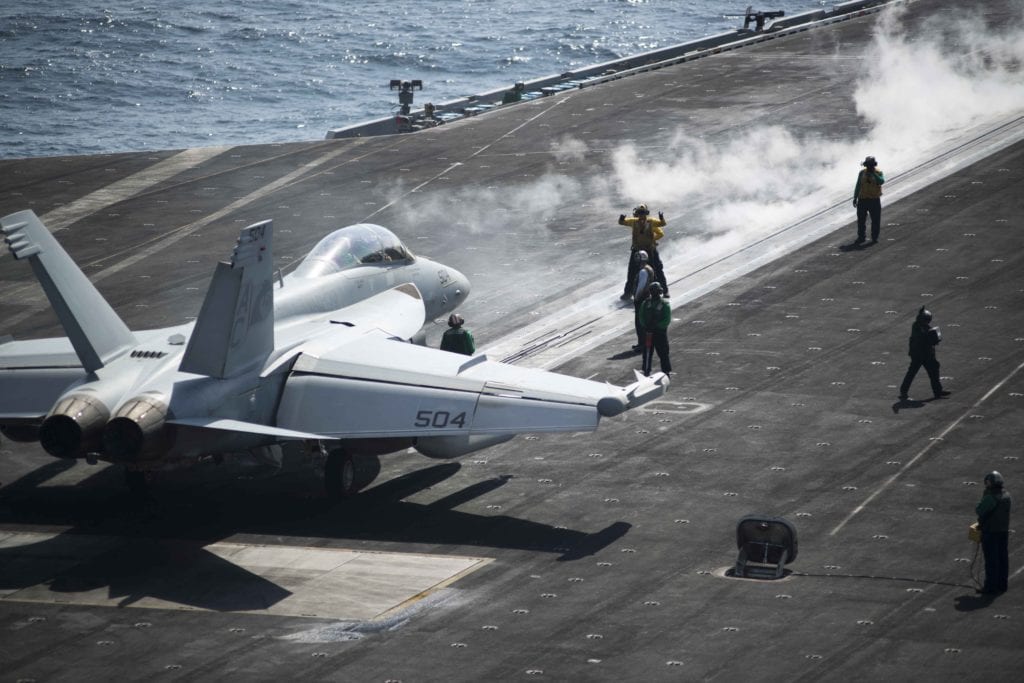
ARLINGTON, Va. — The U.S. Navy’s Next-Generation Air Dominance (NGAD) family of systems is planned to include a replacement for the EA-18G Growler electronic attack aircraft in addition to the F/A-18E/F Super Hornet strike fighter, a senior official said.
Rear Adm. Gregory Harris, the Navy’s director for Air Warfare, speaking in a March 30 Navy League Special Topic Breakfast webinar, sponsored by General Dynamics, said Increment 2 of the NGAD program is the planned phase to replace the EA-18G.
Harris said NGAD’s Increment 1, the F/A-XX — the planned replacement for the F/A-18E/F — will be the centerpiece of the NGAD family of systems.
“We’re going through the study portions of what [Increment] 2 will be to replace the EA-18G Growler, and we expect that family of systems will accommodate manned and unmanned.”
The F/A-XX “may or not be manned,” Harris said. “The platform meets the fixed-wing portion of the Next-Generation Air Dominance family of systems. We truly see NGAD as more than just a single aircraft. We believe that as manned/unmanned teaming comes online, we will integrate those aspects of manned and unmanned teaming into that. We euphemistically refer to it as our ‘little buddy,’ an adjunct air-to-air platform, EW [electronic warfare] platform, discussion of whether it could be an advanced early warning platform. We will have to replace the E-2D sometime in the future.”
The admiral noted that the notional carrier air wing of the future may have a 60-40 percent manned-unmanned split, but over time will shift to a 40-60 percent manned/unmanned split.
“A lot of that is going to be dependent on the success we see with the MQ-25 Stingray and our ability to truly operate around the aircraft carrier and safely execute that both on the flight deck and in the airplane,” he said.
Harris said the NGAD is in the concept refinement phase and is the Navy is working closely with the Air Force NGAD program, “recognizing that the two will likely be different as far as mold lines just based on different services’ needs, but a lot of the internal mission systems will be similar and open mission system architecture and government-referenced design that will enable us to use best of breed.”
He said the NGAD program is looking to avoid “vendor lock,” whereby the program is locked into using a particular mission system when a superior, less costly or more sustainable system becomes available.
“Industry should look at different ways to team,” Harris said. “Our industry primes get very comfortable with the folks they’ve worked with in the past. Some of that has worked out very well for us; other times it may not have worked a well as well would have liked. I recommended that they broaden their view and look at as many of those folks as they can to team. This will enable a lot of the smaller companies to work into the niche market they may be very successful at.”
- SECNAV Advocates Increased Legal Immigration to Increase Shipbuilder Workforce - April 23, 2024
- Insitu Going Strong at 30, Focusing on Maritime Operations - April 8, 2024
- Navy Awards Boeing Additional Funds for MQ-25 Drones for Testing - April 3, 2024






